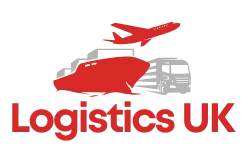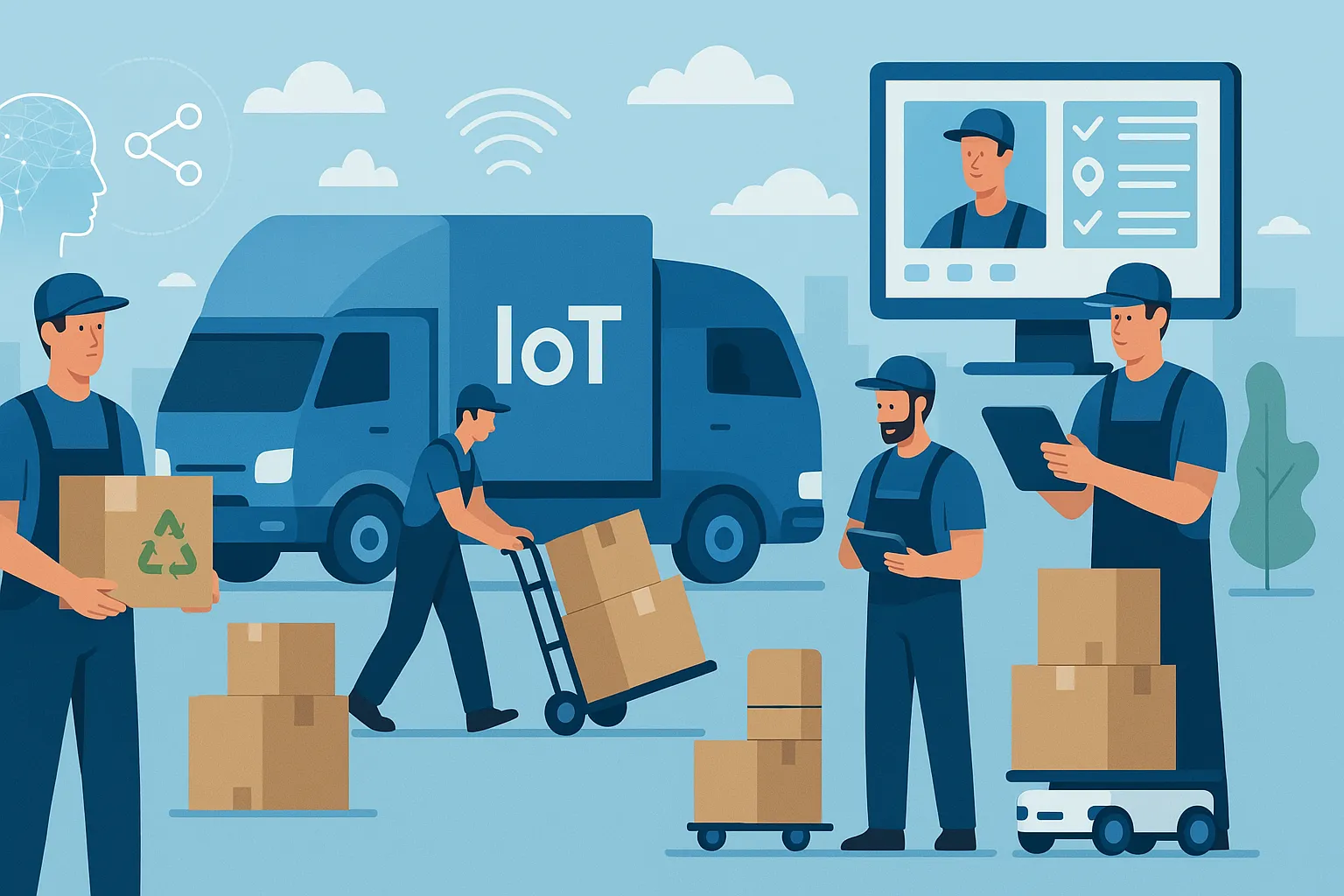Table of Contents
New technologies are changing our daily lives and it’s hard to ignore, but these changes are happening even in the traditional moving industry. Movers are innovating based on AI, automation, IoT, digital platforms and sustainability. This is transforming not only the business processes within a moving companies, but also the moving itself.
AI-Powered Customer Experience and CRM
One of the most notable areas of change is the use of AI for customer relationship management (CRM). AI is making the job of creating a moving quote much easier. Instead of a home visit, the customer simply uploads a photo or video of their belongings, and AI estimates the volume of belongings and weight to create a moving quote and a moving inventory.
We are also increasingly seeing AI-based chatbots popping up on websites and apps. Movers are also starting to use such chatbots. They easily answer simple questions and can even work as a contact form, allowing the customer to leave their details by simply interacting with the bot. For example, such a bot is implemented on the website of WellKnown Moving Company.
Intelligent Logistics and Operations
AI can also help with logistics. Intelligent logistics systems optimize the allocation of muling teams. AI-driven route planning can find the fastest and safest routes for moving trucks and the most convenient routes for moving crews, reducing travel time by ~15% and fuel consumption by ~10%.
Safety is one of the reasons high tech is making a difference. Truckers are installing AI-enabled cameras in trucks to monitor driver behavior. Such a camera monitors the driver’s state of mind and helps them stay focused, which greatly reduces accidents. This kind of feature has the potential to become popular among long distance moving companies.
IoT and Real-Time Tracking
The Internet of Things has been stirring the minds of mankind for several years now. In the movers industry, it is leading to increased transparency. On trucks, installing GPS devices to track real-time movements for customers and management is becoming more and more common.
Digital inventory management is also becoming more common. Not only are paper lists a thing of the past, but PDFs are also becoming a thing of the past. Movers are using a special app on their mobile device. Companies are also starting to adopt RFID systems – scanning a tag allows each box to be logged as it is loaded or unloaded.
Many movers also offer online portals or mobile apps where customers can book services, sign contracts, make payments, and monitor progress. Allied Van Lines, for example, developed a custom app to digitize inventories and paperwork in real time, eliminating delays and errors
Robotics in Loading & Unloading
Fully robotic moving crews have yet to emerge, but robots are already starting to help with packing and heavy lifting. Robot prototypes have already teamed up to move furniture – for example, in one test, autonomous robots at Amazon successfully moved a sofa over obstacles, suggesting that someday machines will be able to assist with the most difficult moving tasks. But of course, for now, that’s not a near-term prospect. The main obstacle is not even the availability of technology: machine learning, neural networks and robotics are already creating successful precedents. However, the issue of economic necessity is not going off the agenda.
Also Read: Moving Isn’t Just Physical—Here’s Why the Emotional Side Matters More Than People Think
Sustainable Moving Innovations
The industry is also going green. A major focus is cleaner fleets: many companies are adding hybrid or electric trucks to cut emissions (an electric moving truck can lower carbon output by up to 60% versus diesel).
They are also adopting greener packing practices. Reusable plastic bins and biodegradable packing materials are replacing single-use cardboard and foam peanuts, and many companies have gone paperless by using digital inventories, invoices, and e-signatures instead of paper forms. Adopting these eco-friendly practices not only benefits the planet but also improves efficiency and appeals to eco-conscious customers.


